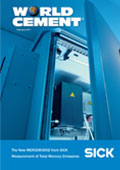Editorial comment
Sub-Saharan Africa is one of those regions that investors must have long thought of with a combination of wistfulness and lust – that sense that there is money to be made, if only the conditions were right for making it. Well, for some, 2011 could be the year. The IMF’s January 2011 World Economic Update (WEU) includes a special focus on Sub-Saharan Africa and predicts growth of 5.5% in 2011.
Register for free »
Get started now for absolutely FREE, no credit card required.
To talk about Sub-Saharan Africa as a single entity, however, is fairly misleading, given the massive disparity of wealth between the countries that make up the region. The WEU divides the region up into oil-exporting countries, low-income countries (LICs) and medium-income countries (MICs). The fate of the oil exporters is bound to that of its export markets, and as such these countries experienced a significant downturn in 2009 from which they are in the slow process of recovering. Still, the 2009 downturn for an oil-exporting SSA country is not the dreary thing it was for many of the higher income nations across the world, which saw significant deficits as opposed to reduced growth. Meanwhile, the 29 LICs have survived the global economic crisis relatively unscathed, experiencing more than 6% growth rate between 2004 – 2008, dropping only slightly to just under 5% in 2009, and predicted to surge ahead with 6.5% growth this year. The MICs, with South Africa at their head, experienced a 1.6% deficit in 2009, their economies being relatively closely tied to those of the developed West. The IMF anticipates that these countries, which have already begun to recover, will continue to rebound in 2011 with growth of around 3.5%. Meanwhile, the forecast from Standard Chartered Bank predicts that, as a whole, Africa’s economy will grow at an average annual rate of 7% over the next 20 years – surpassing even China.
The relationship between China’s economic development and Africa’s is not incidental. China’s exponential population growth and increasing wealth have caused it to cast its investment net beyond its national – or even continental – borders to explore the benefits of establishing businesses and partnerships in Africa, which has the wealth of resources to incite the aforementioned investor’s lust. Sub-Saharan Africa’s mineral and oil resources are renowned, but corrupt management, lack of infrastructure and poor governance (also renowned) have been the stumbling blocks to further development. (Could it be that the problem lies not in the governors themselves but in the rigid, westernised development model that is being imposed on such a vast, eclectic continent?)
Infrastructure and its development is something of a vicious circle. Building bridges and dams, installing power lines, and so on are much easier if you have proper roads on which to transport building materials and construction equipment. Infrastructure development requires sufficient investment, but in many cases government funds are simply insufficient, or else improperly managed. This year could see a change, as up to 17 general elections are scheduled in the Sub-Saharan African countries. In the meantime, cement capacity continues to increase as new investors – with Chinese companies among them – seize the opportunity to be a part of the region’s growth.
WORLD CEMENT will be keeping up-to-date with all the latest developments in Sub-Saharan Africa and across the world, and will keep you informed with our regular Regional Reports and news in print and online. In this issue, our focus is further north in the GCC and Maghreb countries, and for issues that may be closer to your heart we look at plant maintenance, refractory management and materials handling.


